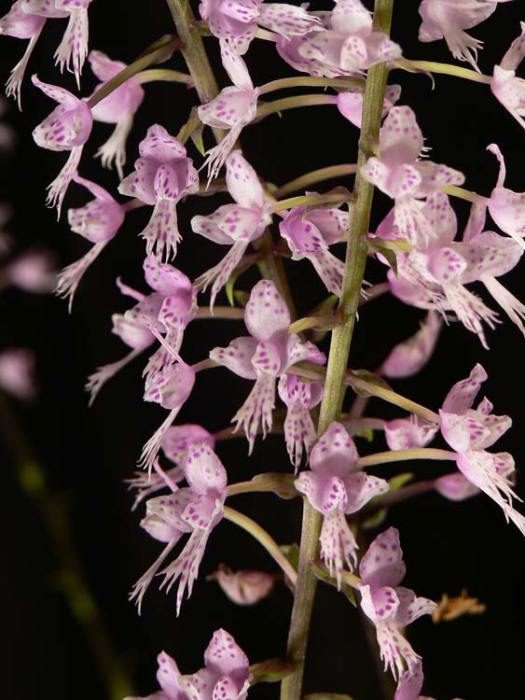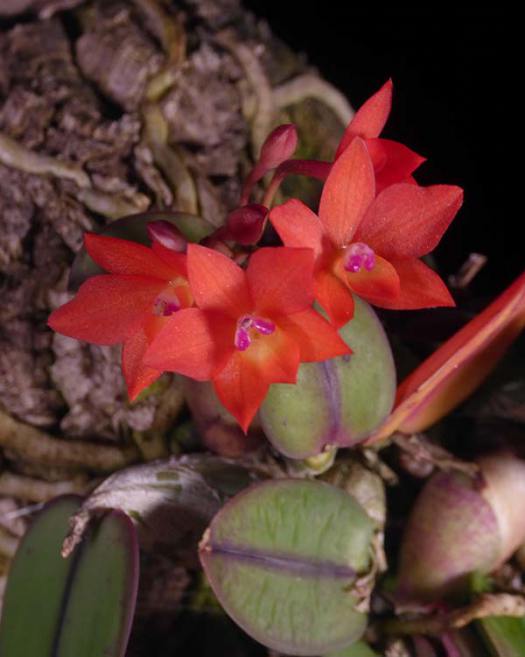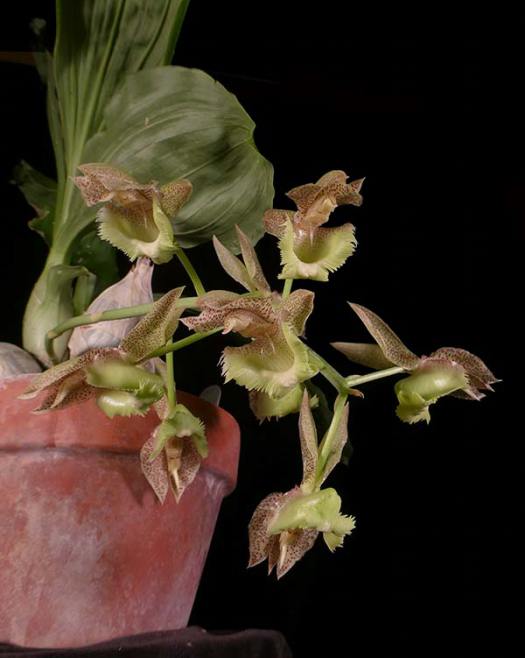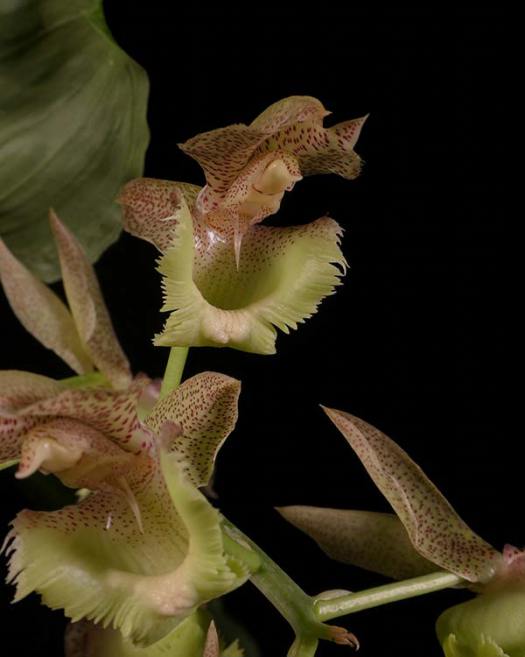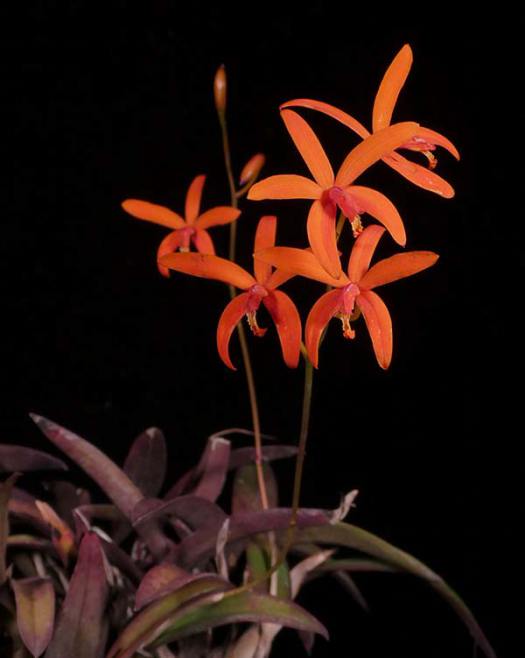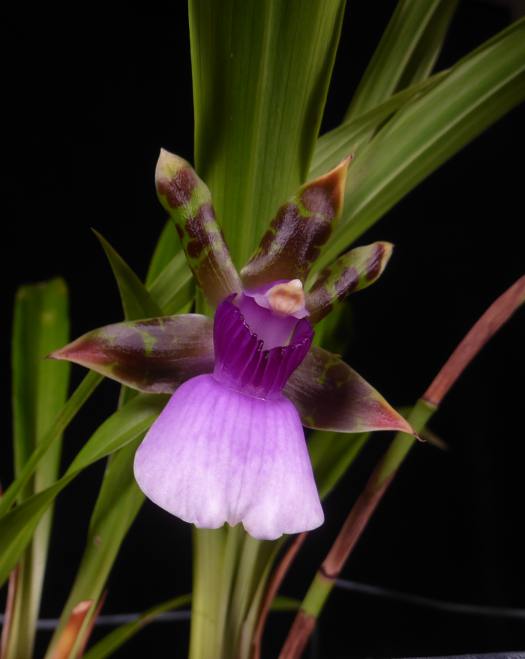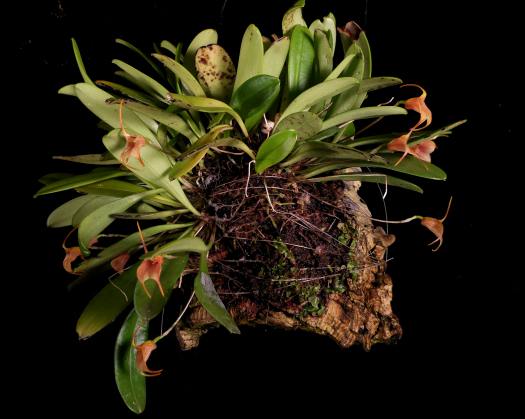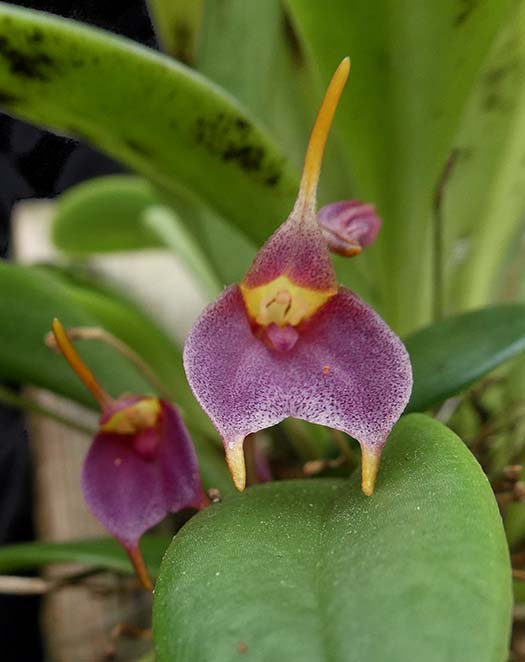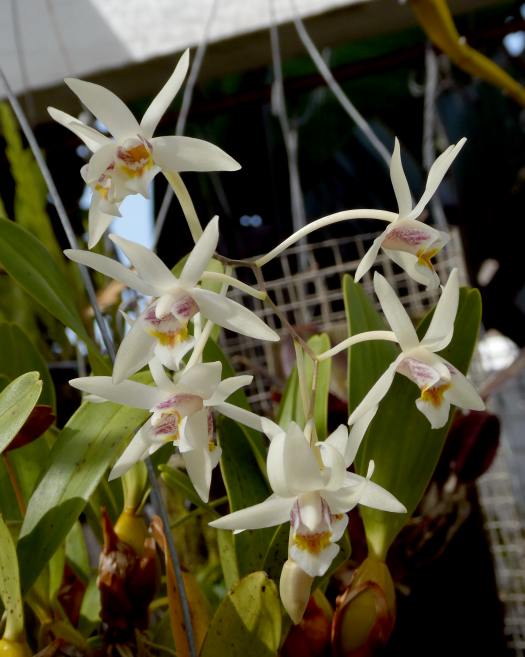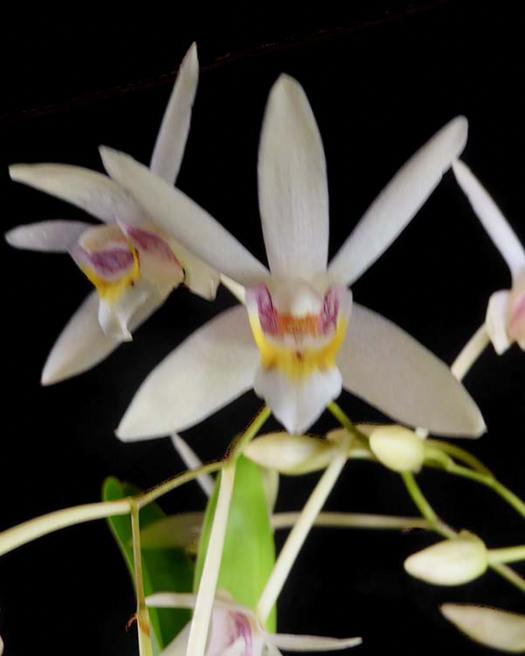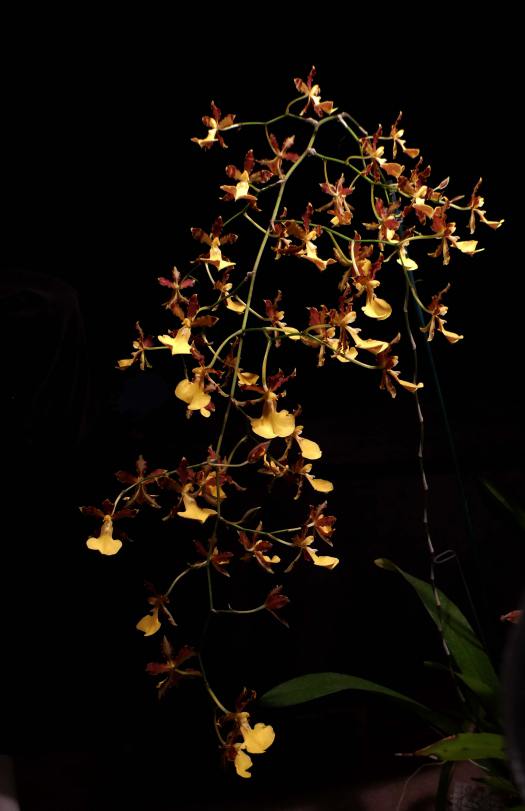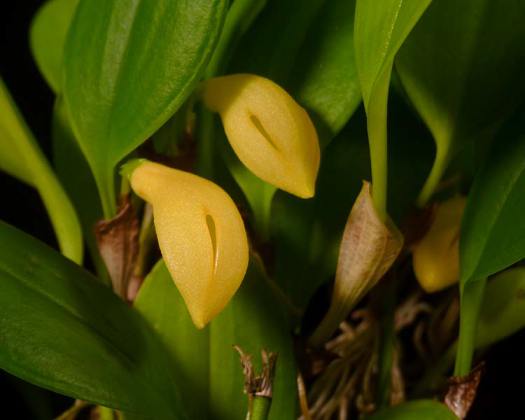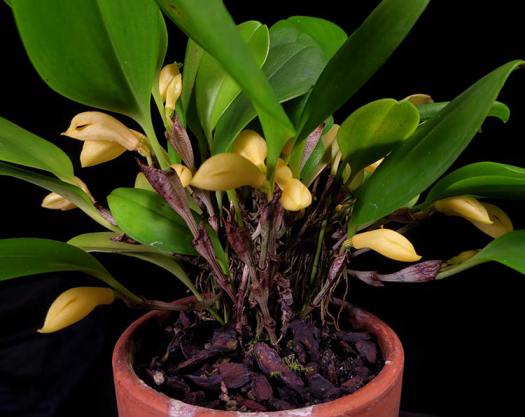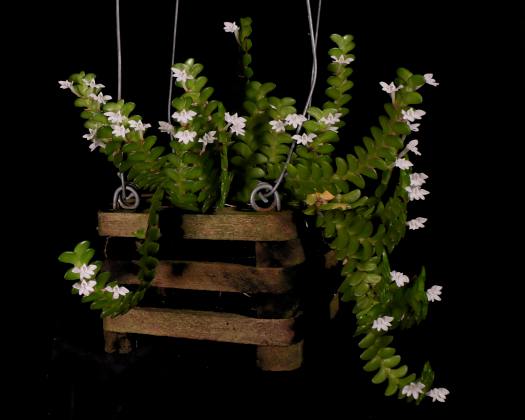November 2020
From Lynn Wiand:Lynn grows all plants outdoors, very close to the southern California coast. |
|
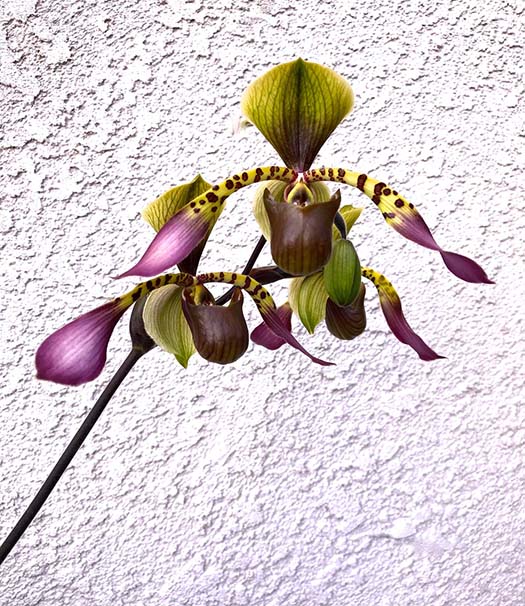 Paphiopedilum lowii |
|
Stanhopea tigrina var. nigroviolacea 'Predator'Bloomed at the end of September- a late bloomer |
|
From Glenda Urmacher: |
|
Angraecum calceolus |
|
From Scott McGregor:
|
|
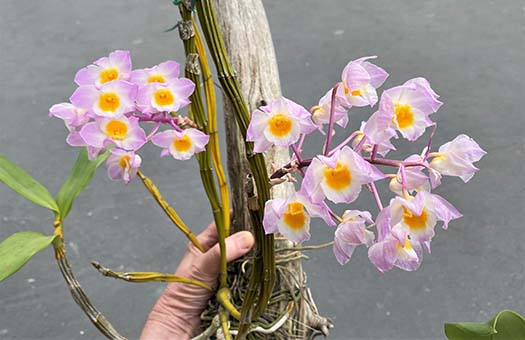
Dendrobium amabileAn autumn flowering Dendrobium from Vietnam, with the first of two newly opening spikes (right) and later (above) the second. One bouquet fades and another opens… |
|

Spiranthes sinensis f. albaA cute terrestrial that blooms off and on from April through October. It grows pretty much all over Asia. The genus is named for the flowers opening progressively in a spiral. This is the alba form. |
|
 5.jpg) Sobralia (not)macraThis unidentified species, sold originally as S. macra, is really putting on a show this year. It has the unusual habit (for a Sobralia) of flowering both at the top of mature canes like a typical Sobralia, but also from short leafless spurs arising from the base of the plant. The first pic shows five open flowers and two faded blooms from the prior day, and the second pic shows a sixth flower blooming from the top of a cane. The plant is only about 16” tall, grows well outside, with flowers that last just a single day. |
|
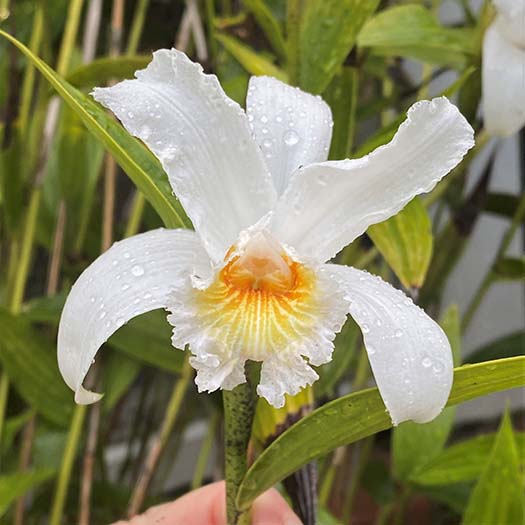 Sobralia yauperyensis alba (aka virginalis, violacea)Here’s a happy Sobralia with 17 flowers visible and another 3-4 out of the frame. The flowers only last a day or two, but flush blooms a half a dozen times or so per year. Sobralias do best outside with at least some sun—you can grow them like you would a Cymbidium—and they are prettier! There’s a lot of confusion on the name of this and related Sobralias. You can read more about it here: http://sobralia.autrevie.com/Sobralia_yauaper.html |
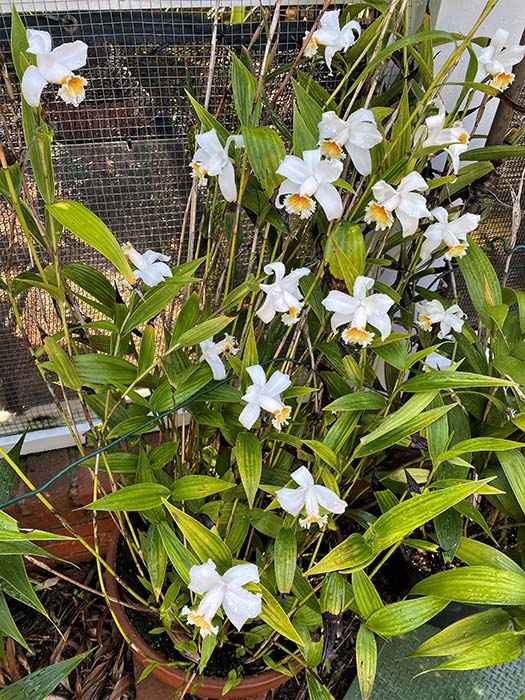 |
From Roberta Fox:
|
|
Outside in the Back Yard: |
|
Stenoglottis longifoliaA terrestrial from South Africa. While it is blooming, the foliage starts to die off. The inflorescence will continue to open flowers for about two months. The new growth starts within a few weeks after the old leaves die, so I continue watering it. |
|
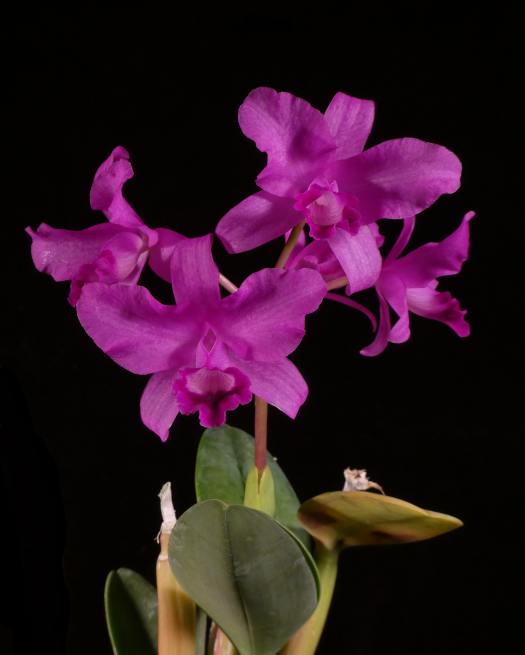 |
|
Cattleya bowringianaGrows hanging under polycarbonate protection. |
Cattleya (Sophronitis) cernua ssp. mineiraMultiple flowers on a thin raceme. There is no sheath - the flowers emerge as the new leaf opens. The purple polliea are a nice contrast to the orange flowers. |
Catasetum fimbriatumThe Catasetum show continues. These grow outside about 2/3 of the year, move into the greenhouse in winter to keep them a little warmer, and particularly to keep them dry. They are outside pretty much the whole time that they are in active growth, benefitting from the brighter light. |
|
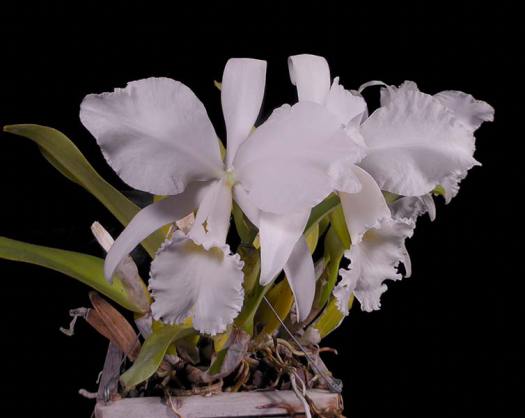 |
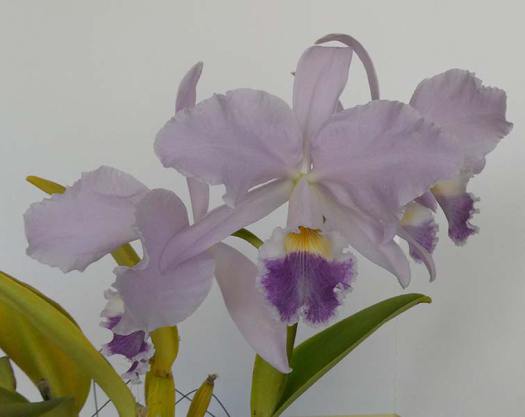 |
Cattleya labiataAlba on the left, coerulea on the right. Last month you saw the rubra form. Grows under polycarbonate protection from cold rain, but otherwise, experiences the full range of winter temperatures. |
|
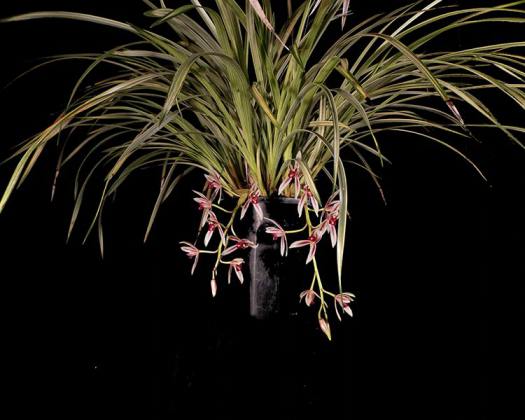 |
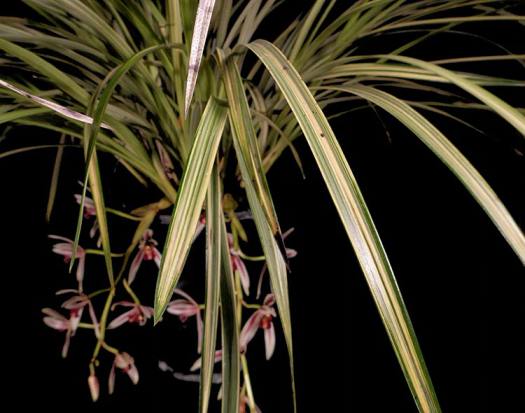 |
Cymbidium dayanumThis is the variagated-leaf form. It is just as vigorous as the solid-green-leafed form. |
|
 |
|
Cattleya (Laelia) sanguilobaA rupiculous Laelia. It grows in full sun, in gravel with a thin layer of soil, to mimic its habitat on rocks with roots in cracks that contain organic matter. |
|
 |
|
Zygopetalum maxillareGrows in a basket, on the shady side. It's a rambler. |
|
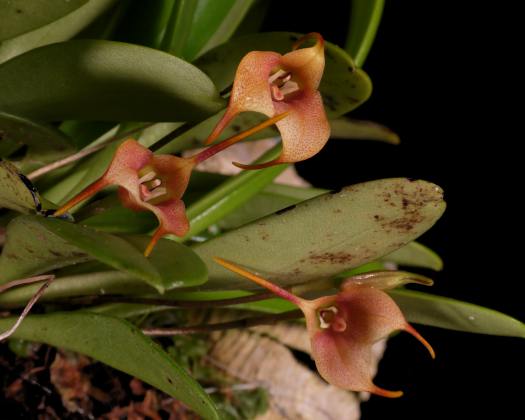 |
|
Masdevallia floribundaSecond flush bloom this year. This is one of the most forgiving Masdevallias to grow outside, since it is more tolerant of warmth than most of the genus. |
|
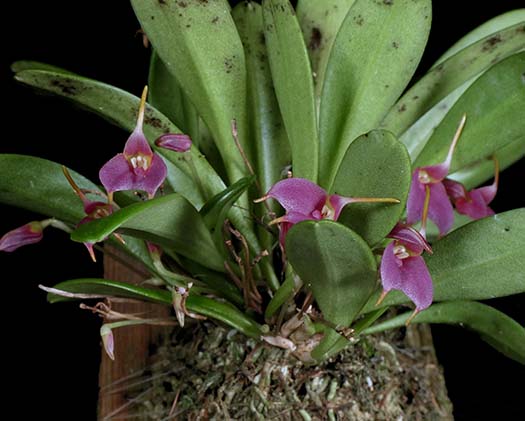 Masdevalia sp. (floribunda, purple)This is closely related to the Masd. floribunda shown above, it may be a different form of the same species, or a separate species. |
|
Epigeneium (Dendrobium) triflorum var. orientaleGrows in a basket (or could be mounted). It blooms several times a year. |
|

Cattleya (Laelia) pumila 'Black Diamond'The camera doesn't quite capture the intense color saturation. Flower is as big as the plant. |
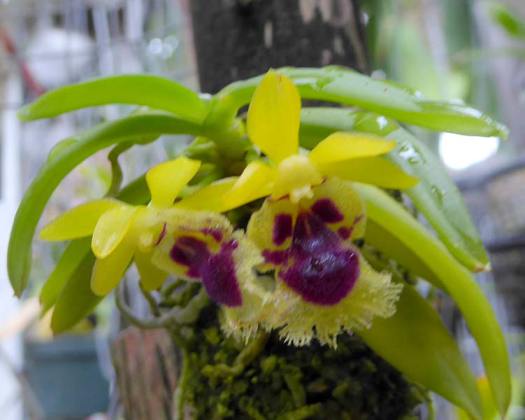
Haraella retrocallaIt is little, so there is room for this one in any collection. It can grow warm, but also grows readily outside, in a damp, shady area. It may be petite, but is robust and durable. It blooms sequentially two or three times on each inflorescence, and blooms several times a year. It is quite fragrant. |
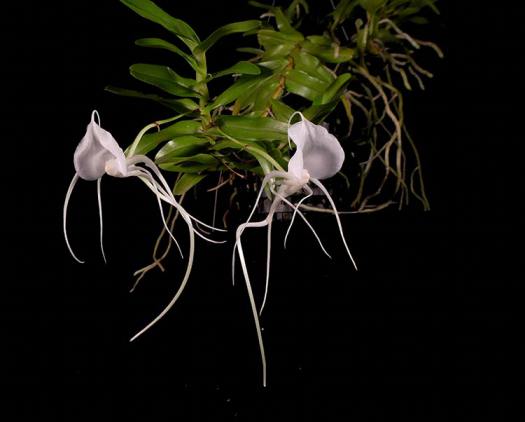
Angraecum germinyanumWith the twisted segments and long spur, this Angraecum makes me smile. The plant grows in, and now mostly out of, a basket. With plenty of water, the aerial roots are very healthy. |
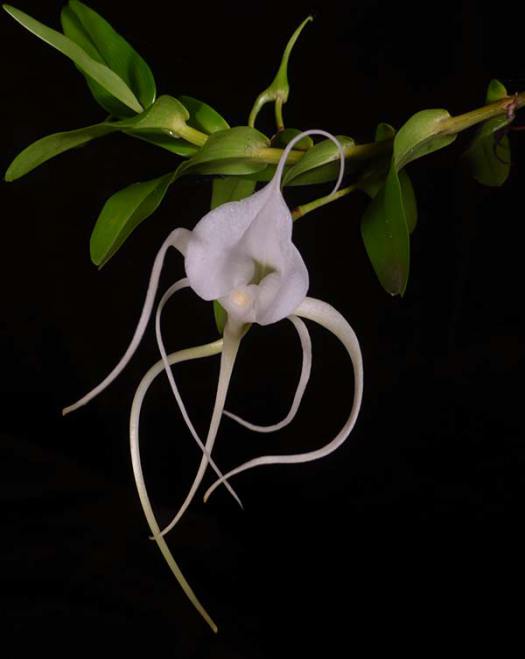 |
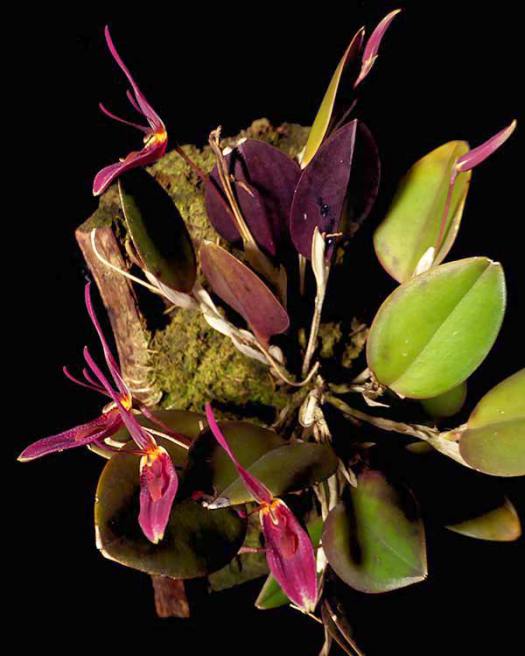 |
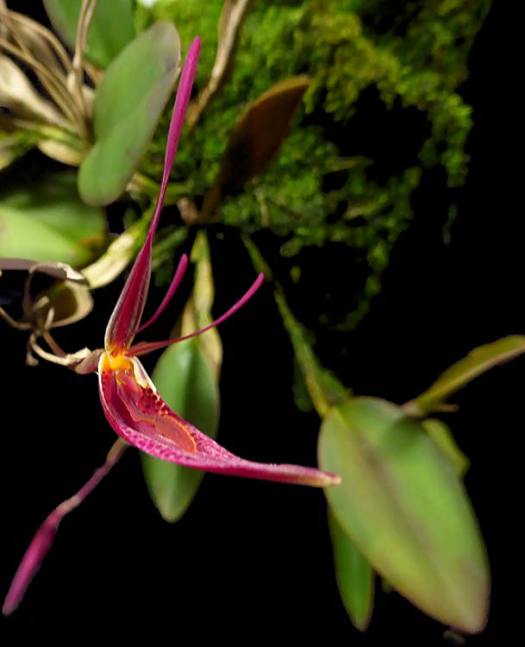 |
Restrepia condorensisIn bloom most of the time, but occasionally does a flush bloom. |
|
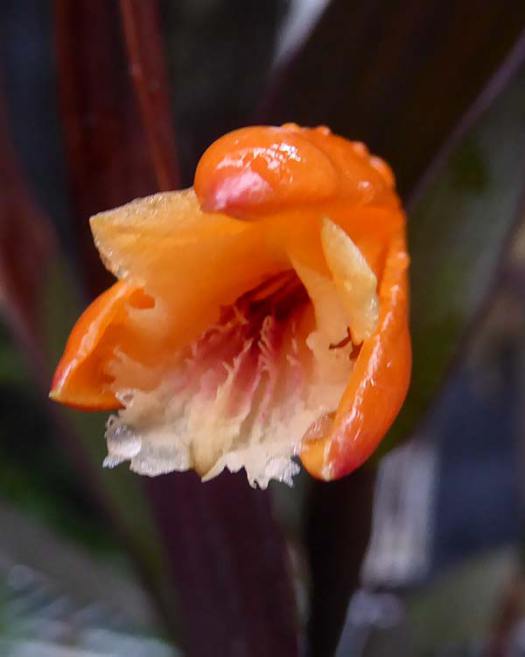 |
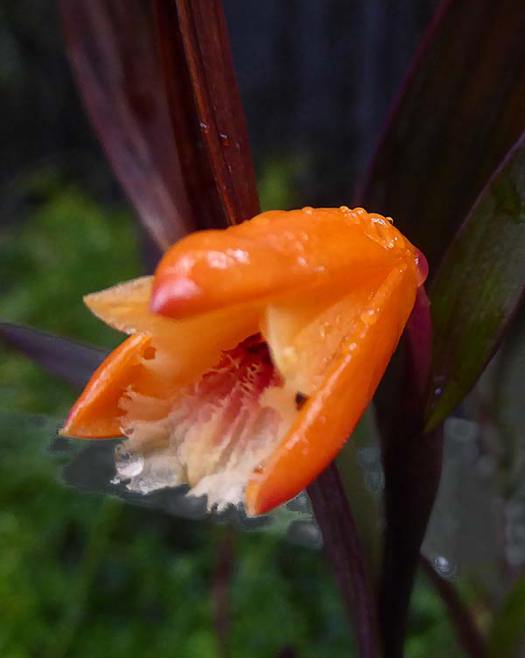 |
Sobralia croceaThis is as "open" as the flowers get. Like the rest of the Sobralias flowers don't last long, but are produced sequentially over several months. This one grows in rather deep shade. |
|
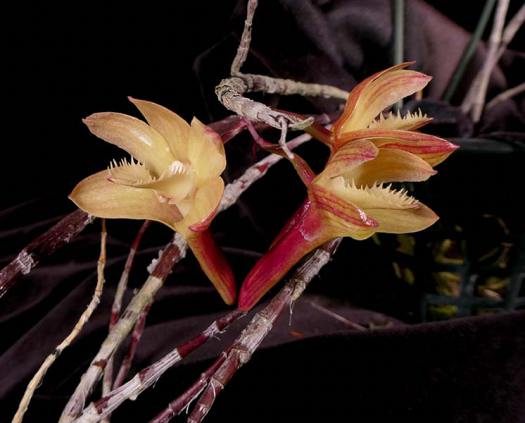 |
 |
Dendrobium serratilabiumName means "Saw-toothed lip" and it certainly lives up to its name. It blooms on old, leafless canes - and can do so repeatedly so don't cut anything that isn't shriveled and crunchy. I do dry it out somewhat in the winter for about 2 monts. |
|
 |
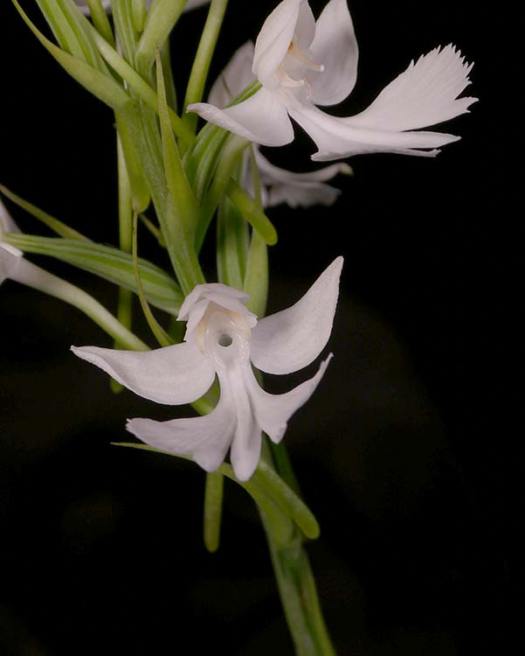 |
Habenaria dentataMore teeth... This is the perfect Habenaria fo the outdoor grower. It goes completely dormant, and benefits from some drying out - but not too aggressively. I water enough to dampen the medium about once a week in winter, then increase watering in March to trigger the growth cycle. Where Hab. medusa needs a greenhouse or indoor growing, and Hab. radiata requires a near-frost winter chill, this one is in the "Goldilocks zone" - fine with our normal winter temperatures. |
|
In the greenhouse... |
|
 Oncidium hyphaematicumThe spike can be 5 feet or more. It's bloomng time is rather variable. This year, I was able to move it outside when the spike became awkward to manage in the greenhouse. When it blooms later, during cold weather, I bring it into the house when it outgrows the greenhouse. |
|
Zootrophion alvaroiThisis the second flush bloom this year. This is as "open" as the flowers get, looking like little lanterns. The pollinator has to be REALLY small. |
|
Angraecum distichumThis just keeps getting better. Flowers are about 1/2 inch. |
|

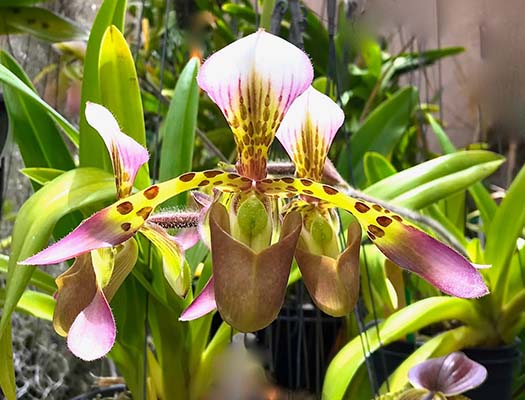
.jpg)
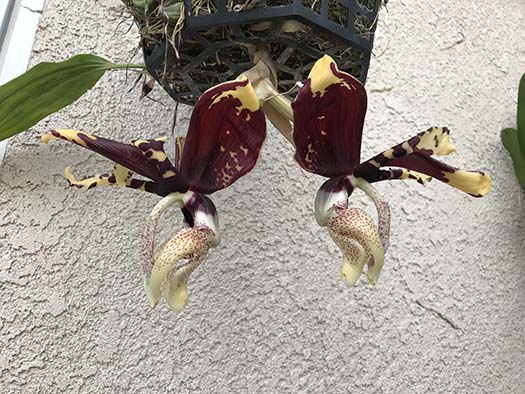
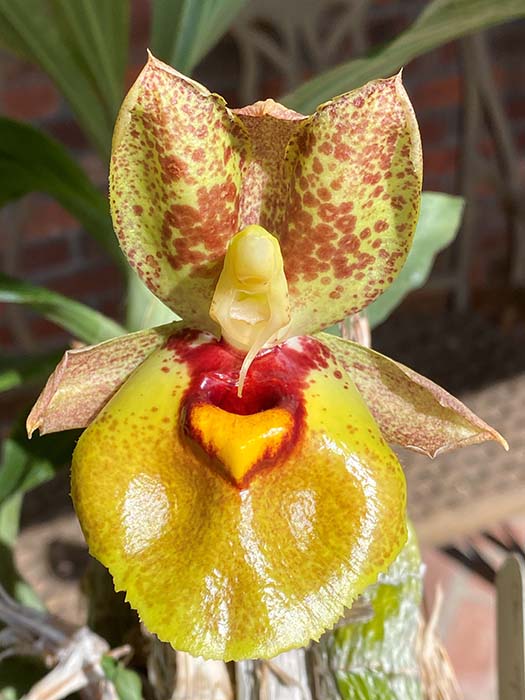



 6).jpg)
